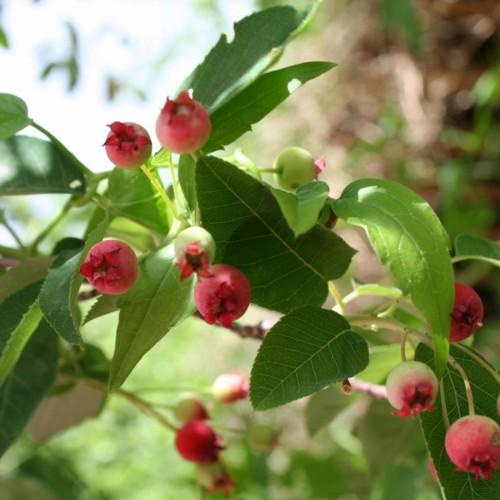
Roundleaf Serviceberry
Amelanchier sanguinea
Also Known As - Roundleaf Shadbush,Red Twig ServiceberryWatering:
Average
Hardiness Zone:
4
Flowers:
Flowers In Spring
Sun:
Partial Shade, Shade
Soil:
Clay, Loam
Fruits:
Fruits Ready In Fall
Edible:
Yes
Leaf:
Yes
Growth Rate:
Low
Drought Tolerant:
Yes
Care Level:
Moderate
watering
Roundleaf Serviceberry should be watered deeply and slowly once a week. Allow the soil to dry out between waterings. The soil should remain consistently damp but never soggy. This plant does best when watered in the morning, giving it a chance to take up the water before the heat of the day. A general rule of thumb is to water until you see it draining from the bottom of the pot.
sunlight
Roundleaf Serviceberry (Amelanchier sanguinea) is a deciduous shrub that grows best in full sun to partial shade, meaning it needs at least 6 hours of direct sunlight each day. The ideal time of day for Roundleaf Serviceberry to receive direct sunlight would be between 10am and 2pm, when the sunlight is the strongest and brightest. This plant species may also benefit from dappled sunlight throughout the day in addition to the 6 hours of direct sunlight, as long as the temperatures are not too hot. Too much direct sunlight during peak heat times of the day may cause scorching and leaf burn to the foliage. For optimum growth, Roundleaf Serviceberry should receive at least 6 hours of direct sunlight daily.
pruning
Roundleaf Serviceberry should be pruned in late winter or early spring while the plant is still dormant. During pruning, look to remove any dead, diseased, or weak branches, as well as any crossed or rubbing branches. Branches growing too close to the center of the tree should also be cut and the tree should be thinned to slightly open up the canopy. Pruning should be kept minimal, aiming for no more than about 20% of total branch volume to be removed.
